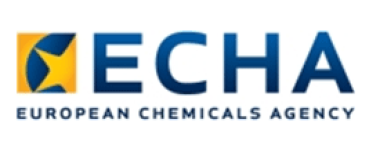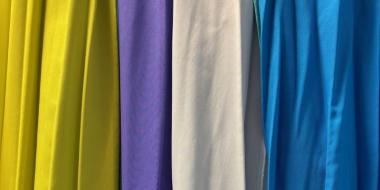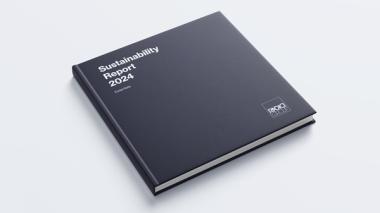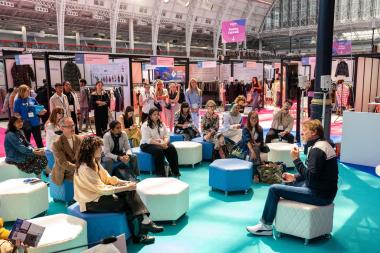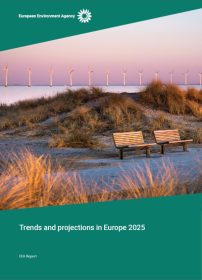Source Fashion January 2026 Show Champions Collaboration
Source Fashion, a European leading fashion sourcing show, will once again champion the power of collaboration at its upcoming 2026 edition opening 13-15 January at Olympia London. Building on its strong partnerships with WRAP, Products of Change, and now Euromonitor International, the show will unite sustainability leaders, innovators, and analysts to inspire meaningful industry progress. Through expert-led sessions, actionable insight, and shared initiatives, Source Fashion will spotlight practical steps towards a more responsible, circular, and insight-driven global sourcing ecosystem.
Championing Circularity with WRAP
Continuing its close collaboration with leading climate action NGO WRAP, Source Fashion will highlight the organisation’s pivotal work in driving circularity and sustainability across the global textiles sector. Ahead of and during the January show, WRAP specialists will contribute a series of expert guest blogs and articles, offering valuable insight from their latest research, including the Durability in Focus report, the Textiles EPR report, and the UK Textiles Pact Roadmap.
At the event itself, WRAP will take to the stage for a thought-provoking debate session, bringing together industry leaders to explore the challenges and opportunities shaping a more circular future for fashion. Mark Sumner, Programme Lead at WRAP said, “WRAP’s continued collaboration with Source Fashion demonstrates how we are working with organisations to inspire meaningful climate action. The union takes our expertise beyond the sustainability circles to direct the sector towards Circular Living. Through the UK Textiles Pact and our recently refreshed UK Textiles Pact Roadmap, we’ve seen game-changing advances in the technologies and business models of the future, with new collaborations challenging old assumptions and turning what was niche into mainstream consumer behaviour. Source Fashion is a proven platform for bold, challenging conversations so we are proud to bring our insights to these important discussions to help propel the industry.
Driving Inclusion and Innovation with Products of Change
Source Fashion will also partner with Products of Change, highlighting the organisation’s commitment to inclusion, equity, and sustainable innovation across the fashion supply chain. Products of Change case studies and content will be featured in the show’s newsletter and content hub, offering practical examples of how inclusive practices can drive positive change within the industry.
At the January show, Products of Change representatives will share their expertise on stage, engaging in discussions around inclusive and responsible business practices. In addition, Helena Mansell-Stopher, CEO Products of Change will further support the show by joining its advisory board, helping to guide programming and initiatives that reflect the sector’s evolving sustainability and inclusion priorities. Helena Mansell-Stopher said, "At Products of Change, we believe that meaningful progress in sustainability and inclusion can only be achieved through shared commitment and collective action. Our continued collaboration with Source Fashion enables us to continue to engage directly with brands, manufacturers, and industry leaders, particularly in the fashion space, who are ready to challenge norms and embrace responsible business practices. By working together and showcasing real-world examples of positive change, we can inspire a more equitable, innovative, and future-fit fashion supply chain."
Driving Market Insight with Euromonitor International
Source Fashion is also delighted to announce a new partnership with Euromonitor International, the world’s leading provider of strategic market research. Through this collaboration, Euromonitor will deliver exclusive insight sessions on commodity shifts and pricing trends across the next two editions of the show, as well as host a senior sourcing leaders’ breakfast briefing on 14 January. Beyond the event, Euromonitor will also contribute bi-monthly digital content, providing Source Fashion’s community with ongoing analysis of global sourcing and market dynamics.
Marguerite LeRolland, Senior Global Insight Manager at Euromonitor International said, “Global sourcing is going through one of its most unpredictable periods in recent memory, and access to reliable insights is critical. By partnering with Source Fashion, we can help retailers and brands forecast more confidently and build resilience into their supply chains and business models -sharing our latest data, commodities analysis and market intelligence directly to sourcing and buying teams.”
The Source Fashion January 2026 show at London Olympia, 13–15 January, will continue to champion collaboration as a driving force for progress in fashion. Through expert-led sessions, in-depth case studies, and cross-industry debates, the event promises to equip attendees with the knowledge, tools, and inspiration to build a more sustainable, circular, and inclusive future.
Source Fashion







